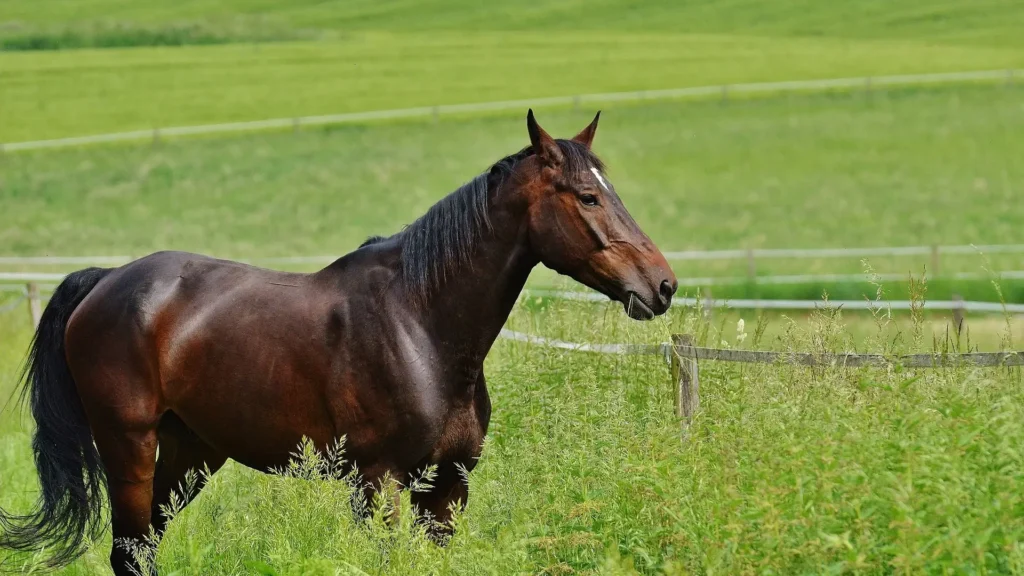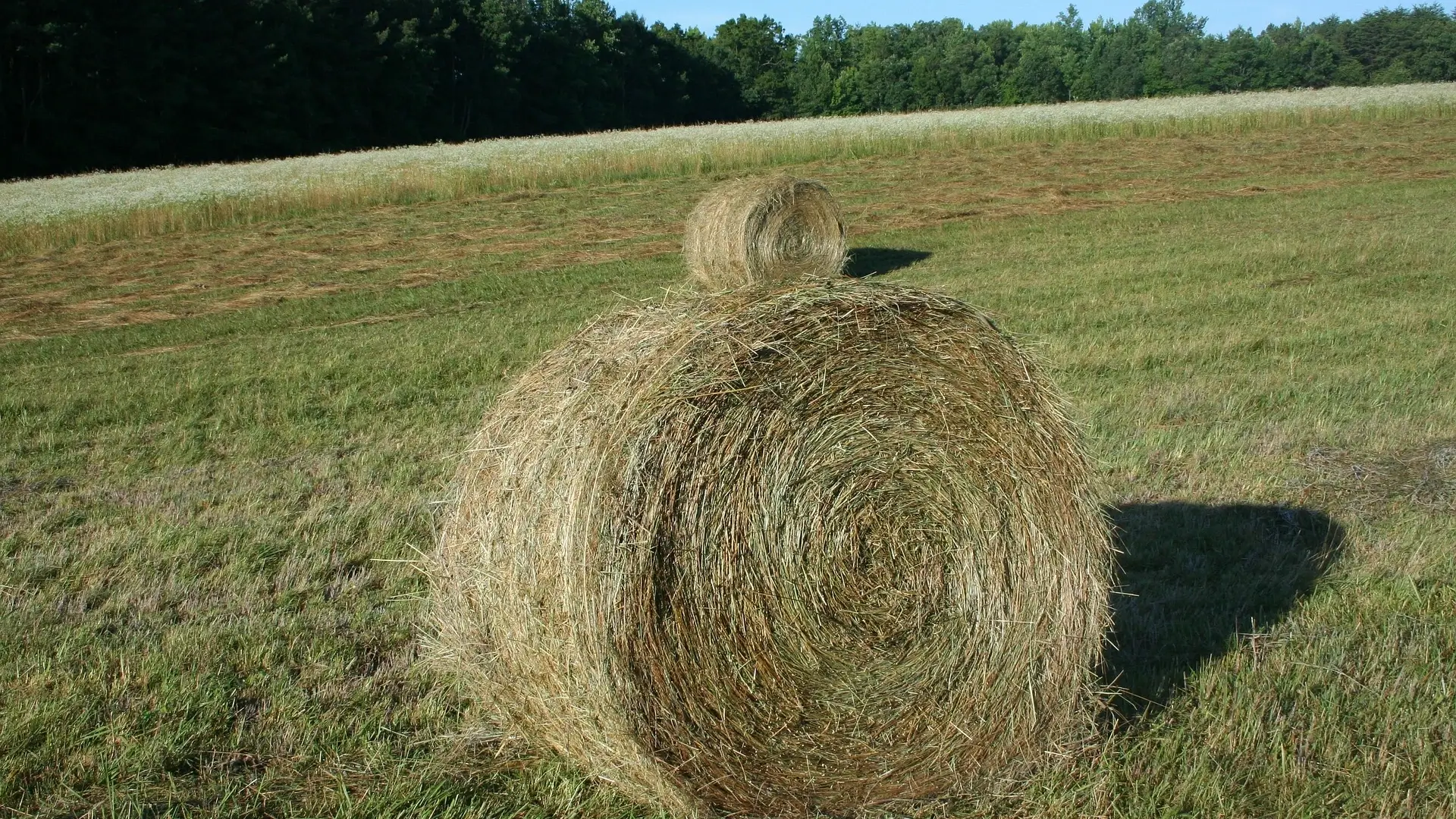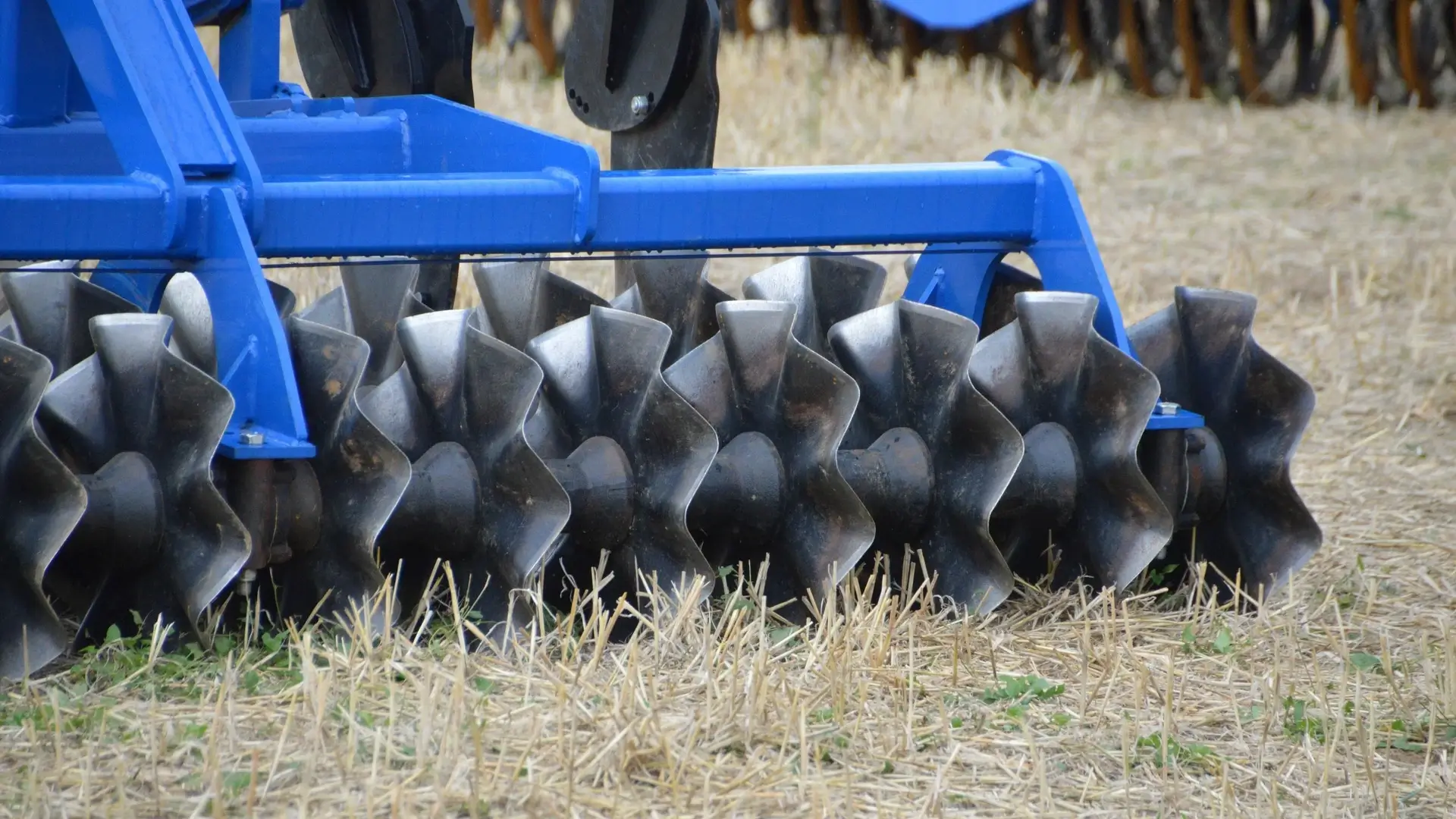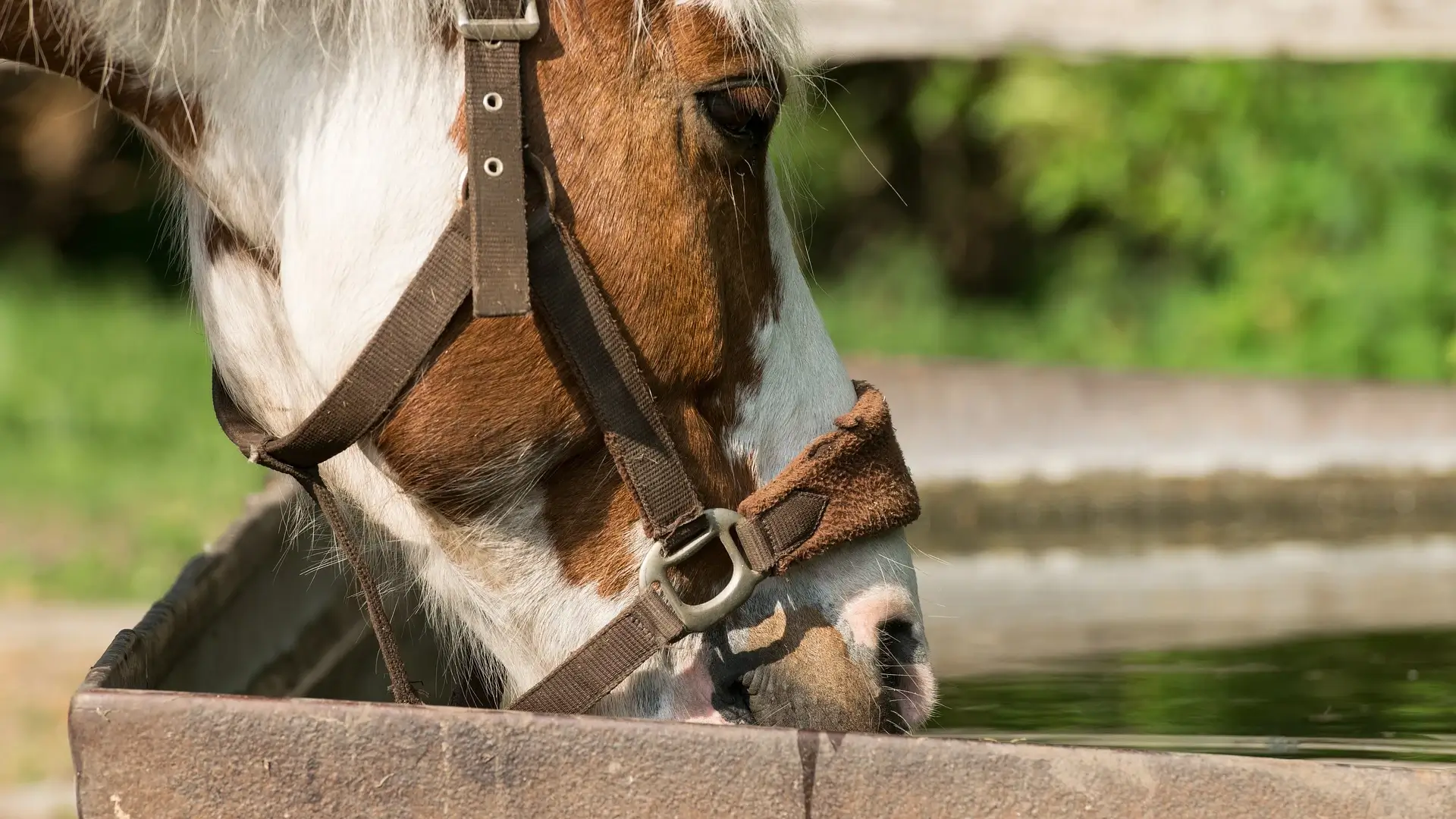While many of us would love to have horses in our backyards or near our homesteads, the reality is that horses do require a certain amount of space. Keeping a horse in a small-scale pasture is viable if you stick a bale of grass hay in for their grazing needs.
But is it possible to keep a horse in a small-scale pasture on natural grazing? With a few adjustments, horses can be kept and grazed on a small-scale pasture! Horses require special considerations, such as having regular rotation to other fields to rest the range. They also need nourishing grass species, legumes, and herbaceous plants suitable for heavy grazing.
It will also involve some maintenance to keep the pasture in tip-top shape for optimum grass growth and regrowth. You will need to harrow the land, helping to aerate the soil. With each rotation, you will need to be on top of poo picking and weed management to ensure your horse has a healthy pasture to graze on.
I often see neglected pastures turning into damp and compressed tracts of land where weeds thrive, and the grazing becomes poor-quality. This is not healthy for your horse.
If the pasture is left to overgrow with undesirable plants, it can quickly become an unhealthy grazing place for your horse. Toxic weeds can take root, and before you know it, your horse may sicken or begin to lose weight.
Pasture Sizes for Effective Grazing
As a rule of thumb, you need an acre of land to keep one horse. This equates to enough space for the horse to graze, run, and get exercise. If you keep two horses in one pasture, you would want that pasture to be two acres and three acres for three horses.
If you don’t have a pasture or paddock that is precisely an acre in size, you can go smaller, but you will need several pastures or paddocks to rotate between. Rotational grazing is when you move your horse from one smaller field to the next so the grass can rest and recover from being grazed. If you want this with a small pasture, you will split the one-acre pasture into two or three sections.
How to Plan Your pastures When You Don’t Have a Lot of Land
If you don’t have many acreages, having several smaller pastures where you manage the grazing is essential for sustained natural grazing. Horses are picky eaters, and they will go for all the best bits of grazing they can find. This can lead to the damage and overgrazing of a more extensive pasture in no time at all since they will only eat the best grass, damaging the overall field.
1. Use Dry and Green Pastures To Keep Horses
If you do not have enough land to make several smaller enclosures for your horse or horses, then you may need to have a “dry” corral that you rotate out to every other time. This concept works well to help the “green” pastures rest and recover.
A “dry” corral is a pasture where you provide an excellent quality bale of hay for your horses instead of natural grazing. Be sure to add some variety by layering some hay nets or placing hay in different parts of the corral. While it is easier to roll in a large bale of grass hay, it may not appeal to your horse’s palette.
2. Rotational Grazing Helps Maintain Vegetation Health
I have four pastures that I rotate my horses through on my smallholding. Each field is less than a quarter of an acre in size. I manage to keep two to three horses together in each grazing unit.
Carefully keeping track of my grazing rotation, I move the little herd of three horses from pasture to pasture according to the grass’ growth rate, ending at the “dry” corral.
I keep my horses in the “dry” corral for at least twice as long as I keep them in each green pasture. The tiniest green pasture can only be grazed for as little as a week before I need to rotate my herd to the following field. Then, I keep them in the “dry” corral for as much as a month before starting the rotation again.
A good quality grass hay bale in a “dry” pasture can help sustain your herd of horses while your green fields are resting. In winter, this may become the only option you have when the growth rate of the pasture’s grazing decreases.
3. Maintain Your Pastures For Long-Term Growth
Your pastures or paddocks are unique micro-ecologies on their own. You need to ensure you maintain each effectively. Even a tiny pasture can yield substantial grazing and feed value to your horses and other farm animals with the proper care.
The methods below ensure the pasture has fertile soil that drains well. It also ensures grass species thrive, recover quickly from grazing, and sustain herbivores. This means you need to have control over where your animals are grazing.
To keep a handle on where your animals graze, you need to ensure they are kept in their designated pastures. Letting your horses free-roam only works when you have large tracts of land available for free grazing. Having your horses graze all over on a small parcel of land will lead to erosion, and the land will become barren.
For healthy pastures with thriving grazing, you need to have a maintenance program. This involves harrowing, rolling, and poo picking, as well as weeding and reseeding. It may sound complicated—it isn’t (once you get started).
4. Harrowing and Rolling Your pastures
I would love to have a professional agricultural harrowing machine like this and a heavy-duty roller. Still, when you have a small parcel of land, the cost of such machinery is not feasible. Luckily, ingenuity is free, and you can easily design a harrowing machine and roller.
To make a harrowing machine: Take an oil barrel that you add some spikes to, or you can weld some metal rods that create a porcupine appearance to the barrel. Add some stone to the inside of the barrel to give it some weight and prevent it from simply bouncing off the land when you pull it behind your truck or tractor.
Harrowing is when you use a heavy set of cutting blades like the industrial harrower in the picture to lift and air the land. This is vital for land that has become exposed to heavy traffic, such as when a herd of animals grazes the ground. Over time, the soil will become compacted, killing off the grassroots and leading to grass erosion.
A harrower is a steel mesh with metal pegs that lift the soil without tilling the earth completely. The idea is not to plow up the land as you don’t want to end up with a field that needs planting and months to grow.
After an excellent, harrowing session, the soil should be raised and clumped. If your harrower is a bit coarse, you may need to take a rake or garden fork and break up the larger clumps into smaller pieces.
You can use this opportunity to seed new cultivars into the broken soil. If you do this, follow up with adequate irrigation and fertilizer if necessary.
The main idea with harrowing is to ensure the soil is well aerated.
Following the harrowing session, you need to pat the soil back into place, so it doesn’t dry out too much, but you don’t want to compact it too much either. This is when a roller comes in handy. It’s pretty much like the rollers they prepare the green at the local golf course.
5. DIY Roller to Roll Your Pasture
You probably won’t have an agricultural roller handy, but you can easily make your own that you can push with a metal handle or tow behind your truck or tractor to level out the land.
To make a roller:
- Take a metal oil barrel or even a plastic one
- Fill it with heavy gravel or stone
- Drill a hole through the bottom and the lid (large enough to take a 1½ inch steel rod)
- Insert the rod
- Close the barrel securely (you may need to use rivets or bolts to seal it securely)
- Attach steel hooks to the ends of the rod
- Using the hooks, attach a chain or cable and a connector to tow it behind your truck or tractor
When towing the roller, drive slowly, letting the barrel’s weight flatten the land back into place. If you prefer to push the barrel, you can use a longer rod that you bend to shape a handle that rolls the barrel or weld a handle into place on the rod. The barrel should rotate freely around the rod.
If you have a pasture that often becomes waterlogged, then regular harrowing and rolling can help with water management.
6. Waste Maintenance on the Grazing pasture.
While you may be used to poo picking your stables, you should also poo pick your pasture or paddock. A smaller-scale pasture can’t afford to have sections covered in the usual poo spots. When horse poo lies in the pasture, it will eventually lead to grass death as the ammonia content in the fresh poo is too high for the soil to handle.
Invest in a good quality poo picking rake and ensure you get into the routine of poo picking daily. This works best since there won’t be that many poo spots to clean. Or you can pick up poo every other day if you don’t have enough time for daily clean-up.
Don’t throw the poo away. You should have a muck heap where the poo can decompose and form a rich compost that you can (ironically) use as a fertilizer in your pastures later. Fresh poo is harmful to the grass, so you should clean it frequently. Luckily, horses tend to form their own little poo spots, so cleaning won’t be nearly as bad as you may imagine it to be.
7. Perimeter Maintenance
When you are working on a rotational system for grazing, it can be tempting for your horses to jump a fence or climb through an opening to go to the greener pasture before you are ready to rotate them to the new grazing.
While this can be annoying, it is also harmful to a pasture that you have been resting and leaving to seed to have an unplanned grazer for the morning suddenly.
To keep your ponies where they belong, munching at the grazing you have selected, make sure your pasture perimeter is secure. Close up any gaps, tighten barbed wire fences, and fix split rail fences to keep your Black Beauty where he belongs.
With horses, electric taped perimeters work well. While you can purchase the whole kit, the main expense will be the electric tape. The electric tape or wire needs to cover at least 2-3 lines around the pasture perimeter.
8. Securing the Watering Station
Each pasture needs a watering station. It can be a large water trough, several water buckets, or a river (if you are that fortunate). Put the waterer in a naturally high area in traffic as the horses will gather there to drink and socialize. Check out Horse Hydration Guide here.
The grass right around the watering station won’t grow well when horses use the pasture. This area can quickly become a muddy mess when the horses climb into the troughs during warm weather. This area can also become an absolute nightmare with slippery mud and water puddles during the rainy season.
Keep this area neat and hazard-free by laying down some rubber mats or pouring a concrete slab. If you are in a rush, you can also mark off a gravel bed around the watering station, but be aware that this will need to be filled up over time as horses are heavy and compact the gravel.
9. Fertilizing the Green pastures
When it comes to the rainy season, especially after a long and dry winter, I run outside as soon as I see some real rain clouds that start pouring. I fertilize my paddocks with a commercial fertilizer equal to parts nitrogen, phosphate, and potash.
I rest a paddock or two during winter with a top coating of well-composted manure and lime mix. This helps the soil remain damp, and nutrients return to the soil. When the grasses begin to sprout, I again add a nitrogen-rich fertilizer that helps with leaf growth and a growth boost that will lead to seeding of the paddock.
Fertilize sparingly. If you aren’t sure how much fertilizer to use, then use only a quarter of the recommended coverage of the fertilizer you have purchased. Grasses easily burn if the fertilizer is too rich for the roots.
I only apply granular fertilizer as it begins raining or after a good few days of continuous rain. If you are worried, it’s best to dilute the fertilizer with water and apply it with a backpack sprayer. Be sure to wear gloves and a protective mask to keep yourself safe from the fumes that dissolved fertilizer can produce.
10. Irrigation During the Growth Season
Irrigate your acreage every two weeks to make sure the grasses and legumes in your pastures grow. If you live in a hot, dry area, such as the Southern US, you may need to water more frequently.
If you don’t have a sprinkler system or flood irrigation available, then you may need to find a way to water the pasture with a portable fire fighting tank or some other alternative.
When you water your pastures, be sure to water the resting fields more than the grazing pasture. Water your pastures during the early morning or late afternoon when the sun won’t simply evaporate the water before it can be absorbed.
If you have the funds available, you can spring for an automated irrigation system that will take a lot of the heartache out of your irrigation worries.
11. Scheduled Rotation and Day-Night Grazing
Rotating your horse or a small herd of horses between pastures will depend on what grass cultivars you have seeded the field with and how many hours a day the horses are grazing there.
As a general rule, rotate your horses every seven days between pastures. It takes about a week for the grass to start growing again. You can adjust this schedule based on pasture size, the number of horses, and how many hours they have grazed there. It will also depend on how many other pastures you have available.
Farmers sometimes use a “take half, leave half” rule, and rotate a pasture after the horses have consumed about 50% of the grass. Never graze a field to the roots as this may lead to erosion and the land becoming barren.
You must give at least three to four weeks of rest between grazing sessions each pasture. If your grazing sessions are short, such as a week per pasture, then you can rotate more quickly between pastures. With good irrigation and appropriate fertilizing, your pastures should recover swiftly and flush with new growth while resting.
To help stretch your grazing a bit, keep your horses in a dry camp or stable at night where they are on a hay diet (See What Type of Hay is Best for Horses). This may seem like a simple concept. But, a horse that sleeps in a stable or dry camp only grazes for 9-10 hours a day, as opposed to 24 hours a day. Your pastures will have grazing that lasts twice as long due to this simple step.
12. Improving the Grazing With New Cultivars
If you are starting with partial acres, the chances are that the grazing may not be ideal. Certain grazing grasses can sustain heavy grazing. Seeding a hybrid cultivar in your pastures can help them recover faster.
There are two grazing types of grasses found in the U.S.:
- Replant annual grasses seasonally. These include cultivar species such as ryegrass, wheat, oats, and millet that offer high nutritional values.
- Perennial grasses only need planting once as they reseed themselves and grow for more than two years. Timothy, Kentucky bluegrass, and tall fescue are examples of perennial grasses.
Whichever grass cultivar you choose to seed in your pastures, be sure that you know the nutrient content as you don’t want to plant protein and sugar-rich grass that can lead to colic or laminitis.
Frequently Asked Questions About Pasture Management
How many horses can 1-acre pasture support?
If you only have 1 acre of land, you should technically keep only one horse there. However, with different pastures in that acre, you could rotate grazing and have a sacrifice lot where horses are kept on hay only while the other fields recover. This system would allow 2-3 horses to graze effectively in 1 acre.
A half-acre pasture may not keep more than 1-2 horses as there would be insufficient space for more than two pastures and a small sacrifice lot there.
Can you keep three horses on 2 acres?
You can keep three horses comfortably on 2 acres of land. 2 acres is sufficient space for several pastures that you can rotate for grazing. With the addition of a “dry” corral, you would be able to rest several fields at once, ensuring there is sufficient grazing for your horses all year long.
How big should a pasture be for two horses?
The ideal size for a 2-horse pasture is one acre, with other fields of similar rotation sizes available. You can use smaller ranges (up to half an acre in size) for two horses, provided the rotation between pastures is quick, not letting horses graze a field for more than a week to two weeks each.
Resources Used For A Healthy Small Acreage Pasture
I use the following tools and supplies to maintain healthy small pastures and paddocks for horses.
Electric Tape (on Amazon) to keep horses in fences
A favorite commercial fertilizer on Amazon I use when needed.
Supplies to set up Automatic Sprinkler System (on Amazon) for the pastures.
Perennial Grass Seed Mix on Amazon
Conclusion
Having land is a blessing. Having fertile and well-managed land is the result of hard work and knowledge. Now you know how to manage your pastures, you can effectively control your horses’ grazing, ensuring they have sufficient grazing for all seasons without letting your land become overrun with weeds or falling barren.
Plan your management strategy for your pastures. Keep track of when you rotate, fertilize, irrigate, and different seed pastures, and you will have a tremendous rotational grazing system that will save you money, ensure healthy horses and other livestock, and be in charge of your smallholding or homestead.
Happy grazing!
My Favorite Equine Resources For Horses and Donkeys
This list contains affiliate products. Affiliate products do not cost more but helps to support BestFarmAnimals and our goal to provide farm animal owners with accurate and helpful information.
Squeaky Chicken Toy is hilarious to watch and the horses love it! It’s not super tough so keep it away from dogs.
Dewormer with Ivermectin: I use this for my horses and my goats. Duvet makes a great dewormer. I switch between the Ivermectin one and one like this one so the worms don’t get immune to it.
Manna Pro Apple Flavored Nuggets are a delicious smelling treat that my horses go crazy over.
Equinity Amino Acid Supplement for Horses makes a big difference for any horse that’s struggling with arthritis, hoof issues, or just generally. It’s great for older horses who can’t absorb all the nutrients in their food as well!
Manna Pro Weight Accelerator helps older horses gain weight and stay healthier! This was especially helpful when one of my older horses lost weight over the winter and helped her regain her weight over the summer!
Farnam Fly Control goes on the horse or donkey and will keep the flies off your sweet pet. It makes horses way more comfortable and will keep sores from getting infected as well.
Wound Kote protects sores and wounds. It acts as an antiseptic and helps wounds heal faster. It works on both my horses and goats.





